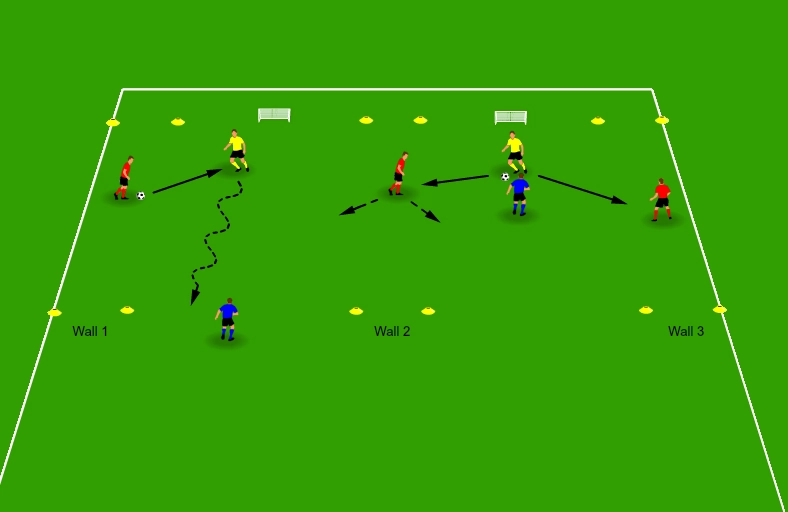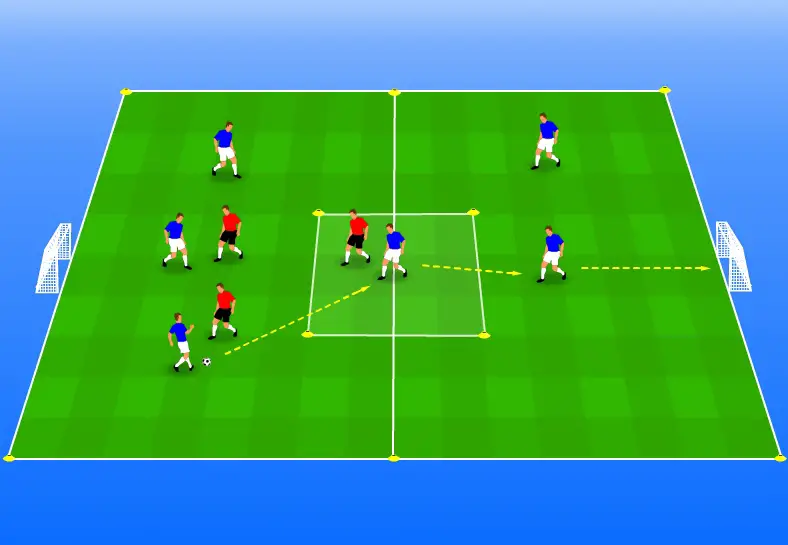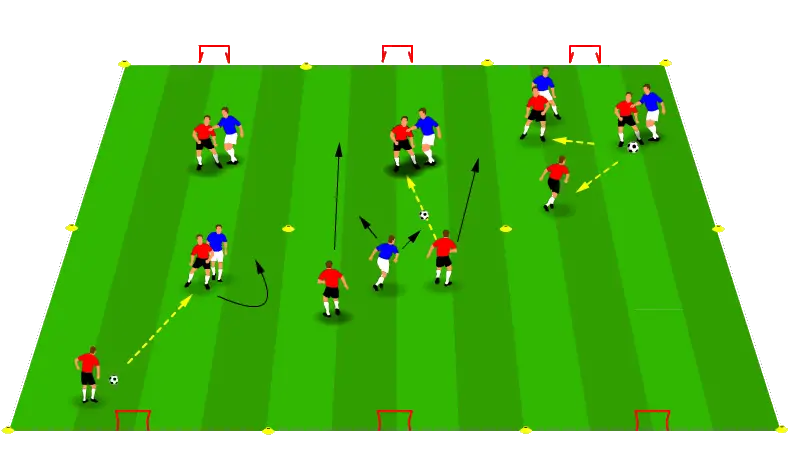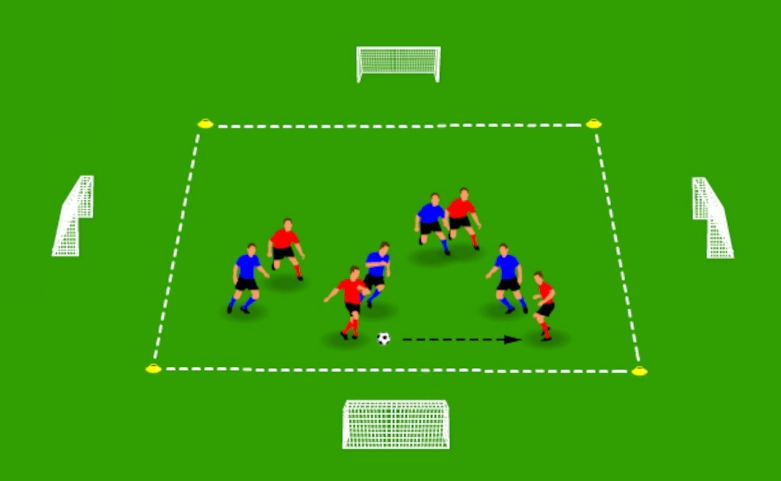Dynamic Defending Drill

Counterattacks rarely arrive in neat numbers. This drill keeps defenders alert by letting the attacker create 1v1, 2v1, or 3v1 situations using wall players before the defender can transition to score.
Setup
- Players: 7 per channel (2 wall players, 1 attacker, 1 defender, mirrored on the opposite side). One wall player can serve both channels if numbers are tight.
- Area: 30x15 m lane with a gate at one end and a mini-goal at the other.
- Equipment: Cones, two mini-goals, plenty of balls.
Wall players stand on the touchlines, the attacker starts with the ball at one end, and the defender waits centrally.
Rules
- Attacker must use a wall player at least once before dribbling through the far gate.
- Wall players are limited to two touches (control + pass). Attackers have unlimited touches.
- Defender can tackle using any legal method except sliding.
- If the defender wins the ball, they immediately counter toward the mini-goal; the attacker becomes the pressing defender.
- Rotate roles after each repetition: left wall → attacker → defender → right wall.
- Run two simultaneous channels so players rest briefly as wall players.
Variations
- Add a second defender who joins only after the first pass to a wall player—this adds delayed pressure.
- Give attackers a time limit (e.g., five seconds) to reach the gate to train decisive play.
- Allow wall players to overlap into the pitch after their pass to create true 3v1s.
Coaching cues
- Attacker: Drive with pace, use the wall player to unbalance the defender, and change direction immediately after receiving the return pass.
- Defender: Angle approach to cut the lane to the gate, then pounce when the attacker looks down at the ball.
- Transition: As soon as the defender wins it, first thought is “Can I finish?”—no extra touches.
Benefits
- Passing & support: Wall-player rules teach attackers to combine rather than dribble blindly.
- Defensive patience: Players learn to shepherd and wait for the heavy touch before tackling.
- Fitness: Short bursts and quick rotations keep intensity high without long queues.
- Mindset: Everyone understands transition moments—steal, score, reset.
Challenge your squad: track defender goals across the session and crown the “ultimate stopper.” Share your leaderboards with us on Facebook or @footballtechnik.



